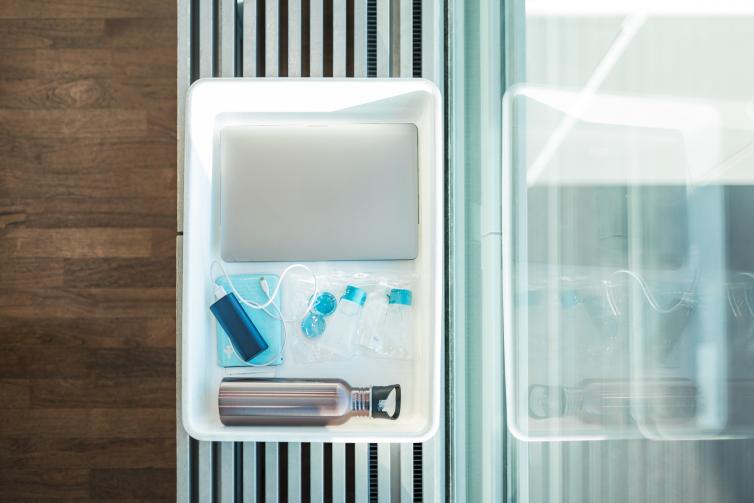Security control at Finavia’s regional airports
1) When you come to the security control line, place all hand baggage and loose items on a tray for scanning.

- Keys and coins: Put your keys and coins in your bag or coat pocket. If they are carried in trouser pockets and other clothing, they will set off unnecessary alarms.
- Clothing and accessories: Take off your coat or jacket and any other items containing metal, such as watches, belts and large pieces of jewellery. Often, the heels of shoes also contain metal, so you can remove your shoes for scanning if your wish.
- Electronics: Remove any laptops, tablets, cameras, power banks and other devices containing a battery or batteries from your bag. Laptops and tablets should also be taken out of their sleeves. The tablet’s protective cover does not need to be removed. Small devices containing a button cell battery, such as car keys, can be left in the bag.
- Liquids: Be prepared to present all liquids you intend to take into the airplane cabin. Pack your liquids in containers that hold no more than 100 ml or grams, and place the liquids in a transparent and resealable one-litre plastic bag. Each passenger is allowed a single one-litre bag. Families are allowed a one-litre bag per each family member with an airline ticket. Liquids over 100 ml are not allowed, excluding medicines and baby foods.
2) Present your printed or electronic boarding pass to the security officer.
3) Walk through the metal detector gate.
If you set off the metal detector gate, a security officer must determine why this has happened. You will be asked to remove any items that may have caused the alarm and then walk through the metal detector again.
It may also be necessary to conduct a pat-down search on your body and your clothes. If necessary, the security officer will check the inside of your trouser or skirt waistband using their fingers.
